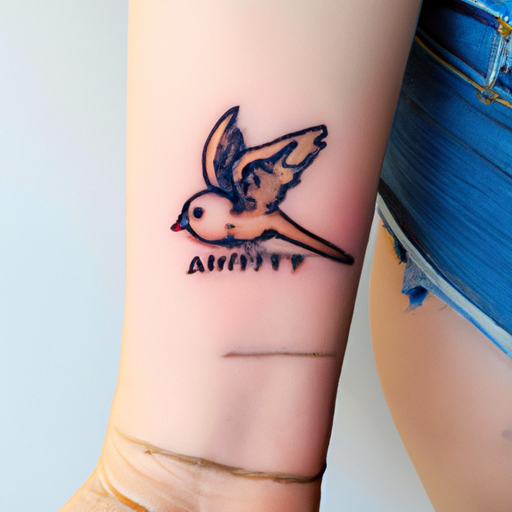Tattoos have been a form of self-expression for thousands of years, and their popularity has only grown in recent times. Whether you’re looking to get your first tattoo or your fiftieth, the process of choosing a design can be overwhelming. This blog post aims to provide you with inspiration and guidance for creating a tattoo that is both unique and meaningful to you.
Tattoos are a powerful form of personal expression, but creating the perfect design can be a complex process. When seeking inspiration for your tattoo, there are many sources to consider, including personal experiences, cultural symbols, and art and design. Taking the time to reflect on what is meaningful to you can help ensure that your tattoo is a true expression of your values and beliefs.
Step 1: Finding Inspiration The first step in creating a tattoo is to find inspiration.
Finding inspiration is a crucial step when creating a tattoo. Here are some tips to help you get started:
1. Reflect on your personal experiences and values: Consider events, people, or beliefs that hold significant meaning to you. You may find inspiration in these areas.
2. Explore cultural symbols and mythology: Cultural symbols and myths can be great sources of inspiration. Researching your own heritage or other cultures can spark ideas.
3. Observe nature: The natural world is a rich source of inspiration for tattoos. Consider animals, plants, and landscapes that hold personal significance to you.
4. Look to art and design: Drawing inspiration from art and design can help you create a unique and visually stunning tattoo. Consider styles such as Art Deco, Art Nouveau, or graphic design.
5. Browse social media and tattoo websites: Social media platforms like Instagram and Pinterest can provide a wealth of inspiration. Tattoo websites and portfolios of tattoo artists can also be helpful in finding design ideas.
Step 2: Designing Your Tattoo Once you have some ideas, the next step is to design your tattoo.
Designing your tattoo can be a complex process, but following these steps can help ensure that your design turns out exactly as you envision it:
1. Choose the placement: Consider where on your body you want the tattoo to be. Keep in mind that some areas, such as the hands and feet, may be more painful and difficult to heal than others.
2. Determine the size: Decide on the size of the tattoo based on the placement and the level of detail you want.
3. Choose the colors: Consider the colors you want to use in your tattoo. Keep in mind that some colors may fade faster than others over time.
4. Research tattoo artists: Look for a tattoo artist who specializes in the style you want and has a portfolio of work that aligns with your vision.
5. Communicate your ideas: Work with your tattoo artist to communicate your ideas clearly. Bring reference images and be open to their suggestions and feedback.
6. Review the design: Once your tattoo artist has created a design, review it carefully and provide feedback for any changes you want.
7. Approve the final design: Once you are happy with the design, approve it for the artist to proceed with the tattooing process.
Step 3: Symbolism and Meaning Tattoos can hold deep personal significance, and it’s important to choose a design that reflects your values and beliefs.
Tattoos can be powerful symbols of personal expression and can incorporate many different elements with their own symbolic meanings. Here are a few common tattoo elements and their symbolism:
1. Animals: Animals can represent a wide range of characteristics, such as strength (lion), loyalty (dog), or freedom (eagle).
2. Flowers: Different flowers can hold different meanings. For example, roses are often associated with love, while lotus flowers can represent enlightenment and spiritual growth.
3. Religious symbols: Religious symbols such as crosses, stars of David, or Om symbols can represent one’s faith and beliefs.
4. Zodiac signs: Zodiac signs can represent an individual’s personality traits or characteristics associated with their astrological sign.
5. Quotes: Tattoos featuring quotes can provide motivation or inspiration, with each quote holding its own unique meaning.
6. Tribal designs: Tribal tattoos often have cultural significance and can represent one’s heritage and ancestry.
7. Geometric designs: Geometric tattoos can represent order and balance, and often incorporate shapes such as triangles or circles.
8. Skulls: Skulls can represent death and mortality, but they can also be a symbol of strength and overcoming obstacles.
9. Feathers: Feathers can represent freedom, grace, and spirituality.
10. Butterflies: Butterflies can symbolize transformation and personal growth, as they undergo a process of metamorphosis to become beautiful creatures.
Once you have your tattoo, it’s important to take proper care of it during the healing process to ensure that it looks its best. Your tattoo artist will provide you with specific instructions for caring for your tattoo, but some general tips include:
Keep the tattoo clean and moisturized
Avoid exposing the tattoo to direct sunlight or water
Follow any other instructions provided by your tattoo artist
By following these steps, you can create the perfect tattoo that is a true expression of your unique identity. Remember to take the time to find inspiration, work with a skilled tattoo artist, and select meaningful elements that hold personal significance. And, most importantly, take proper care of your tattoo during the healing process to ensure that it looks its best for years to come.



